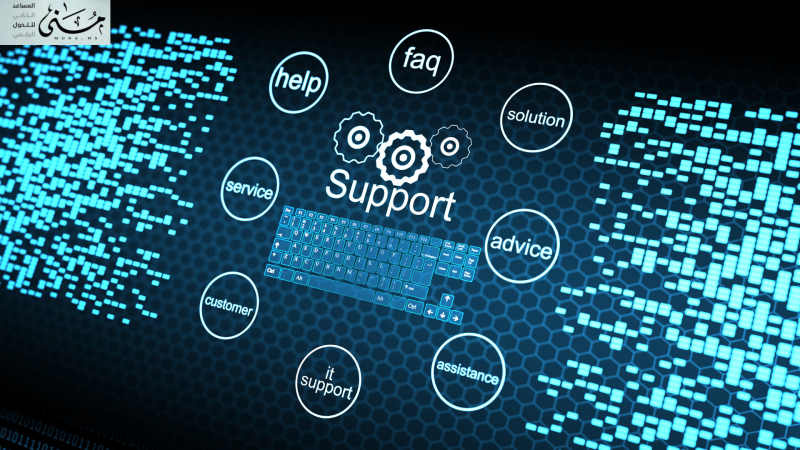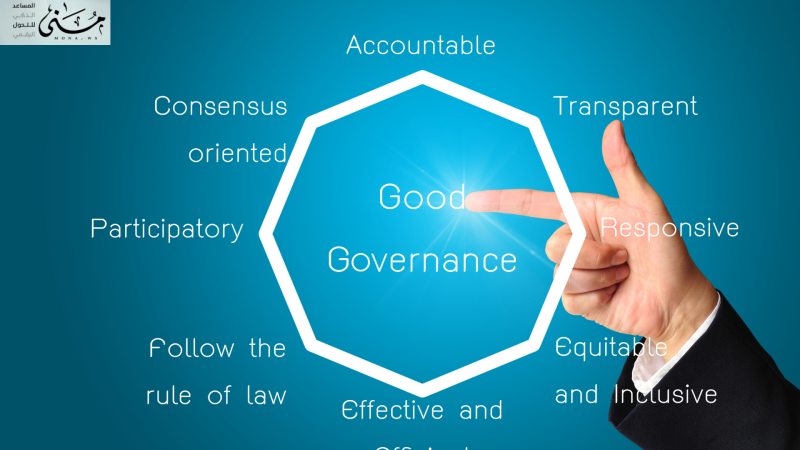Every successful organization has one common factor that cannot be overlooked: clear, precise, and approved policies and procedures that ensure smooth workflow and provide a governing framework for decision-making and performance monitoring. However, many organizations, especially small and medium-sized ones, still suffer from organizational chaos caused by the absence of these policies or their weak implementation. Indeed, many leaders find it difficult to transform management visions and directives into written, systematic, applicable, and measurable policies and procedures.
In this article, we will discuss the methodology for building strong corporate policies and procedures, starting with analysis, then formulation, adoption, and finally implementation and follow-up.
Phase 1: Analyzing the institutional reality and identifying the need
The beginning of developing any corporate policies and procedures must be based on a comprehensive analysis of the organization's reality and operations. This analysis is not limited to operational aspects only, but also encompasses corporate culture, organizational structure, technical capabilities, and the level of administrative maturity. It makes no sense to implement advanced policies and procedures in an environment that still relies on paper for its daily operations, or lacks trained personnel.
Therefore, this stage begins with collecting data and analyzing existing processes, identifying gaps that hinder performance, cause duplication, or lead to ad hoc decisions. Legal and regulatory obligations affecting the organization should also be reviewed, as they represent the primary source for formulating policies and procedures that are compliant with regulations.
Phase 2: Formulating policies and procedures according to standard models
Once the organization's needs are clearly defined, the stage of formulating policies and procedures begins. Here, it's important to differentiate between policies, which represent the general framework and governing principles, and procedures, which explain "how" the policies are implemented. For example, a policy might be "the necessity of reviewing all legal contracts before signing," while a procedure might be "the steps involved in reviewing a contract, from legal review to final approval."
To ensure the clarity of these documents, it is preferable to adopt standard templates agreed upon within the organization, which include the following elements:
- Policy or procedure name
- the goal
- Scope
- Responsibilities
- Definitions
- Instructions or implementation steps
- Application-related indicators
Writing policies and procedures in simple, uncomplicated language ensures that all employees understand them and reduces the possibility of misapplication or interpretation.
Stage 3: Officially adopt policies and procedures
The value of an organization's policies and procedures is incomplete without formal approval from senior management. Accreditation here doesn't just mean a signature; it also includes a legal and administrative review to ensure the content is consistent with the organization's rules and regulations and internal reality. It's best to form an accreditation committee that includes representatives from the legal department, risk management, human resources, and the planning or quality unit.
A system like this helpsDocSuite Policies automates this process, so that each document goes through the stages of review, comments, amendments, and final approval, electronically, with previous versions archived and easy access to any dated version.
Phase 4: Implementing policies and procedures on the ground
Implementing written policies and procedures without a clear implementation plan can lead to disastrous failure. Therefore, any policy or procedure must be accompanied by a communication and awareness plan that includes:
- Training of relevant staff
- Publish policies on an easily accessible internal platform.
- Linking policies to job performance (in periodic evaluations)
- Activating compliance control through periodic reports
A system like this allowsDocSuite Policies links each policy to specific jobs, intelligently displays it in employee files or on management screens, and allows you to track who has read or acknowledged the policy.
Stage Five: Monitoring, Evaluation, and Continuous Update
An organization's policies and procedures are not static texts, but rather a dynamic system that must adapt to changing realities. Therefore, it is crucial to establish a periodic mechanism for reviewing documents and measuring their impact on organizational performance. This is achieved through:
- Performance indicatorsKPIs show compliance
- internal inspection or audit reports
- Employee feedback via surveys
- Results of implementing executive plans
AllowsDocSuite Policies generates customized monitoring reports that link policies to their implementation level, helping decision makers modify or develop policies and procedures in line with actual performance and growth needs.
Digital Technologies and Enabling Policies and Procedures:DocSuite as a model
One of the biggest challenges facing organizations today is not writing new policies and procedures, but ensuring that they are communicated, implemented, and absorbed across different work teams. This is where smart solutions come in, most notably:DocSuite Policies, which provides an integrated platform for planning, reviewing, approving, publishing, and monitoring policies through a unified dashboard.
ContributesDocSuite Policies in:
- End-to-end policy lifecycle management
- Facilitate access to them through a central classification
- Linking policies to risks, tasks, and internal compliance
- Issue alerts when a policy expires or needs to be revised
- Record all changes and document previous versions.
These functions not only enhance governance, but also ensure that policies and procedures are not just words on paper, but real operating tools that influence decisions, performance, and compliance.
In an era of administrative complexity and rapid transformation, no organization can succeed without well-thought-out, approved, and implemented corporate policies and procedures. The biggest challenge lies not in drafting documents, but in utilizing them to serve operational and strategic objectives, which can only be achieved when documents are linked to digital systems, such asDocSuite Policies become part of living institutional memory, not an abandoned archive.
The five steps we've covered—analysis, formulation, adoption, implementation, and monitoring—represent a roadmap for building realistic, applicable policies and procedures capable of withstanding the challenges of a changing administrative reality. With digital tools supporting this journey, organizational excellence is no longer a distant goal, but rather an expected outcome for those who adhere to a smart methodology and governance.
How do you link policies and procedures to the organization's vision and values?
A common mistake some organizations make is treating policies and procedures as mere operational documents, without linking them to the organization's vision, mission, or core values. This disconnect leads to a duality between the principles declared and the decisions or implementation mechanisms actually implemented. However, when an organization's policies and procedures are formulated within a consistent strategic framework, they become tools for directly translating the corporate vision, giving them a double whammy of influence.
For example, if an organization's vision focuses on "innovation in service delivery," operational policies and procedures must reflect this value through mechanisms that stimulate innovation, simplify procedures, and empower employees to make decisions. Similarly, if the organization's values focus on "transparency," policies and procedures must be formulated to encourage disclosure, prevent conflicts of interest, and require leaders to document their decisions in a transparent manner.
Linking policies and values requires the involvement of stakeholders in the formulation, especially from strategy, planning, and human resources teams. This is where the importance of digital systems such asDocSuite Policies allows policies to be grouped according to organizational values, and each policy can be linked to a specific strategic objective within the system, making tracking their alignment to the vision straightforward and measurable via an interactive dashboard.
Establishing policies and procedures that are aligned with the organization's vision not only achieves compliance, but also enhances employee engagement and transforms documents from mere administrative instructions into effective leadership tools that reflect the organization's culture and guide it toward its broader goals.
 تعرف الآن كيف تبني سياسات وإجراءات مؤسسية معتمدة وقابلة للتطبيق؟
تعرف الآن كيف تبني سياسات وإجراءات مؤسسية معتمدة وقابلة للتطبيق؟










Comments
Add New Comment